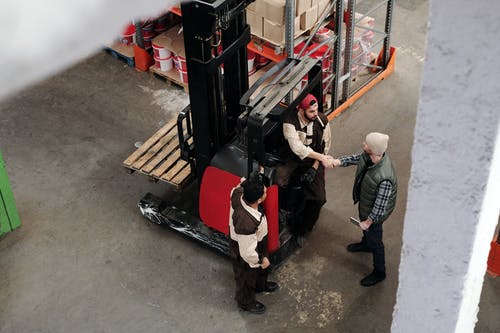Companies that undervalue the importance of workplace culture to productivity do so at their own risk. Especially in a warehouse, where orders have to be processed quickly and follow numerous interconnected procedures, the atmosphere established by management has a huge impact on how effectively employees complete tasks and maintain efficient habits.
More than hard physical work, creating the warehouse culture you want often requires creative thinking and good-faith engagement from everyone involved. Here are some important things to keep in mind when it comes to shaping your warehouse culture for maximum productivity.
Maintaining Visibility and Transparency
Nobody can be productive without knowing what “productivity” entails, and this definition is different for every warehouse. As such, a core part of any warehouse’s culture is determined by how clearly management sets goals and how honest they are about expectations.
To a large extent, workers follow the examples set by their managers. If management is not upfront with employees about problems, employees will return the favor, and inefficiencies will persist and often get worse. Likewise, if management does not trust and respect the people working for them, those people may not respect efforts by management to change established processes in the name of increasing productivity.
A healthy workplace culture should encourage consistent input from employees. Back-and-forth communication about what management expects and what workers can achieve is the backbone of a productive warehouse culture based on mutual understanding and shared goals.
The Importance of Positive Reinforcement
Objective performance indicators can offer employers a picture of warehouse efficiency, but morale is harder to quantify. Perhaps the simplest way to measure it in the modern warehouse is by looking at what management does when workers perform well and compare it to how they react to mistakes.
Acknowledging and celebrating good performance is crucial to a functional warehouse culture. After all, if a worker gets nothing out of increased efficiency but more work, what reason do they have to be efficient? Cash bonuses, awards for safety and productivity, or even something as simple as a thank you can be tremendous boosts to morale, which in turn should make employees more eager to be productive.
Also, while it is important to address mistakes and work to prevent them from reoccurring, employees who are afraid to report errors are not going to be as productive. Just as a warehouse culture celebrates positive achievements, it should also ensure workers are comfortable speaking frankly with supervisors when things go wrong. Open communication allows managers and employees to work proactively to fix the issues at hand.
Addressing the “Silo” Mentality
When companies seek to restructure their workplace culture, one of the most common obstacles they run into is the “silo” mentality. What this means in a nutshell is that, while on the job, workers tend to focus on their own “territory” instead of larger matters that affect the entire operation. This mindset leads to inefficiencies and—sometimes—resistance to change.
People have a tendency to think problems lie with other processes and workers rather than their own, so any effort to create a new warehouse culture needs to take into account how sudden shifts may feel to workers used to doing things a certain way. Put another way, it is impossible to effectively change one process in a warehouse without understanding how it affects all the others
While change is often driven at the corporate level, employees need to buy in for any suggested changes to actually take root. This, more than anything, is the key takeaway for warehouse managers seeking to make a culture change: people are everything, so make sure you are on the same page with yours.

